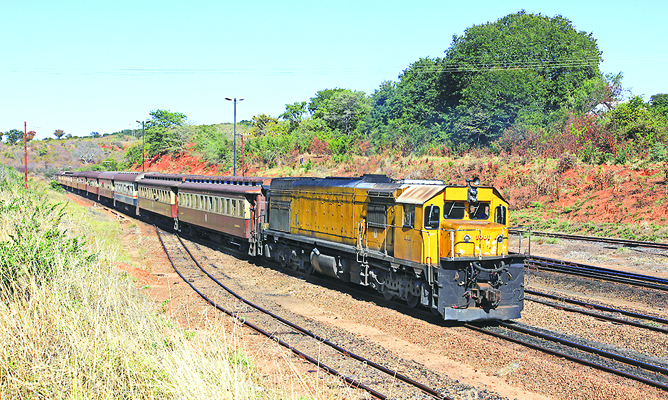NRZ ready to support mining sector
THE National Railways of Zimbabwe (NRZ) general manager, Mrs Respina Zinyanduko has said the parastatal is angling to tap into the expanding mining sector and offer tangible logistical solutions taking advantage of the coming on stream of new mining ventures.
The mining sector is experiencing heightened activity as evidenced by the re-opening of old mines and new ones coming on board.
The Government has set an ambitious target for the mining sector to realise a US$12 billion milestone by year-end and this, despite unforeseen shocks, remains certain, judging by the continued momentum across key subsectors, and the newly commissioned signature projects covering different mineral segments.
According to official reports, the mining sector has attracted more than US$6 billion in investments since 2018, growing its earnings from an average US$2,7 billion to about US$10 billion last year.
National Railways of Zimbabwe (NRZ) general manager, Mrs Respina Zinyanduko
This has been largely driven by the renewed investor confidence as “Zimbabwe is Open for Business”, leading to the opening of new small-scale and large-scale mining projects in different mineral rich areas.
Small-scale miners have emerged stronger, mainly in gold and chrome mining while signature projects are now thriving on new coal-to-energy projects in Hwange and lithium mining as well as the massive US$1,5 billion Dinson Iron and Steel plant in Manhize area, Midlands province.
Last month, President Mnangagwa commissioned the massive Muchesu Coking Coal Project in Binga, Matabeleland North province, which is being undertaken by a British investor, Contango Holdings.
According to the Zimbabwe National Statistics Agency, (ZimStat), mining sectors largely depend on rail transport for moving goods as 67 percent of the 335 073 tonnes were transported by NRZ in the first quarter of the year.
The mining industries continue to use rail transport as it is a cheaper means of transporting bulky goods.
Growth in mining will help drive progress towards the realisation of the national vision of transforming Zimbabwe into an upper-middle-income country by 2030.
Speaking on the side-lines of the 8th NRZ annual general meeting on Monday in Bulawayo, Mrs Zinyanduko said as a bulk transporter is positioning itself to assist the mining sector attain the US$12 billion economy.
NRZ plays a pivotal role as the country’s major bulk transporter by providing transport services for inputs and finished products to and from the productive sectors of the economy.
“NRZ is a bulk transporter, and Zimbabwe is opening a lot of mines, so in terms of the US$12 billion mining economy, NRZ stands ready to give logistical solutions to all those mines,” she said.
To cater to new mining business requirements, Mrs Zinyanduko said it was essential for the revitalisation of the NRZ that is expected to enhance logistics efficiency across various economic sectors while easing the strain induced by using haulage trucks to transport bulk cargo like coal.
In June, the Government signed a US$81,2 million potentially game-changing deal with India on the side-lines of the 18th Confederation of Indian Industry-Exim bank Conclave on India-Africa for the recapitalisation of NRZ.
“Government is working on recapitalising NRZ and we recently signed a US$115 million Afrexim deal where we are going to have nine locomotives and 315 wagon and that is our short-term requirement,” she said.
Money – Image taken from Pixabay
In his 2021 annual report statement presented during the Annual General Meeting, board chairman Advocate Martin Dinha noted that the new dispensation under President Mnangagwa’s engagement and re-engagement efforts has presented several opportunities for growth which it continues to pursue.
“The outlook is positive as the shareholder has shown a new interest to support NRZ and seeks to benchmark major strides and developments towards realisation of an upper middle income economy by 2030,” reads part of the report.
He added that the critical role of NRZ as an economic enabler will entail increasing the capacity of freight from the current 2,5 million to 6,5 million tonnes by 2025 and improvement of the passenger train services.-chronicles









